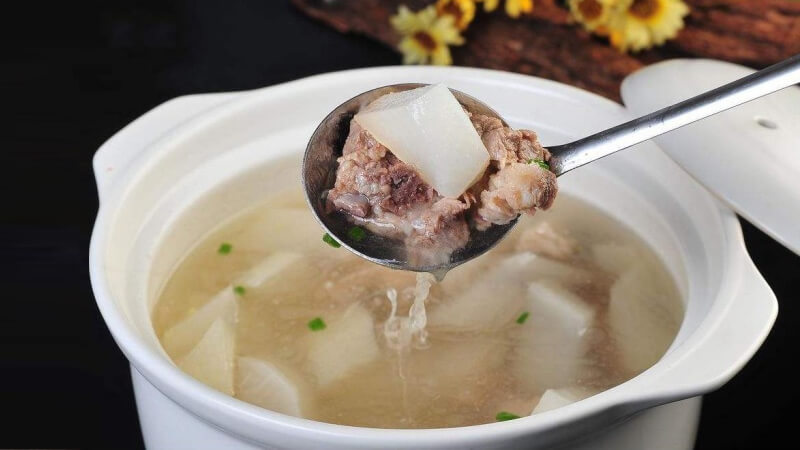Nowadays, the choice of dining at restaurants is increasing due to its convenience and speed. However, some establishments prioritize profit and customer demands over safety by using harmful chemicals instead of broth for flavor enhancement.

Chemicals used to make broth
You can easily find and purchase these substitute chemicals at Chợ Lớn, with prices ranging from 300,000 to 400,000 VND per kg, which can be used multiple times. However, most of these chemicals have unclear origins from China, and long-term use can have serious health effects. Therefore, this article aims to guide you on how to distinguish between broth made from bones and broth made from chemicals to avoid potential health risks.
1 Smell
Usually, broth made from bones will have a distinct light and pleasant aroma that can only be attained after a long simmering process.
On the other hand, broth made from chemicals will have a strong and artificial smell, as additional chemicals have been incorporated to enhance the aroma.

Smelling broth
2 Color of the broth
You can observe the color of the broth to determine whether it is made from bones or chemicals. Broth made from bones and meat will usually be clear and have floating fat layers on the surface.
On the other hand, broth that is red or slightly yellowish-pink definitely contains additives or chemicals. Traditional bone broth, regardless of the cooking time or additional ingredients, will never have such vibrant colors.

Observing the color of the broth
3 Taste test
If the aforementioned methods still do not reassure you, you can taste a small amount of the broth to determine its composition. Broth made from bones will have a natural, mild sweetness and a refreshing taste. If it is spicy, it will have a pleasant spiciness similar to the chili we consume, rather than a strong and irritating flavor.
On the other hand, broth that is reddish or pale pink, with a strong sweet and spicy taste, definitely contains sweetening agents, spices, and chemical colors.

Tasting the broth
4 Dangers of broth made from chemicals
After consumption, within 5 minutes, you may experience a sweet taste on your tongue, tiredness in your throat, hives, and allergies. Many individuals may also feel dizziness, ringing in the ears, and nausea.
Moreover, if pregnant women consume broth made from chemicals, it can irritate the intestinal mucosa, adversely affect digestive enzyme function, and disrupt nutrient absorption. Indiscriminate or excessive use of these chemicals can also impact the kidneys, leading to liver and kidney cancer, respiratory illnesses, and even fetal abnormalities.

Hives from consuming broth with chemicals
Since these chemicals are colorless and odorless substances dissolved in water, they are challenging to detect but can be harmful to health. The methods mentioned above can assist you in determining whether the broth you are about to consume is made from bones, vegetables, or chemicals. We hope this article proves helpful to you!
































